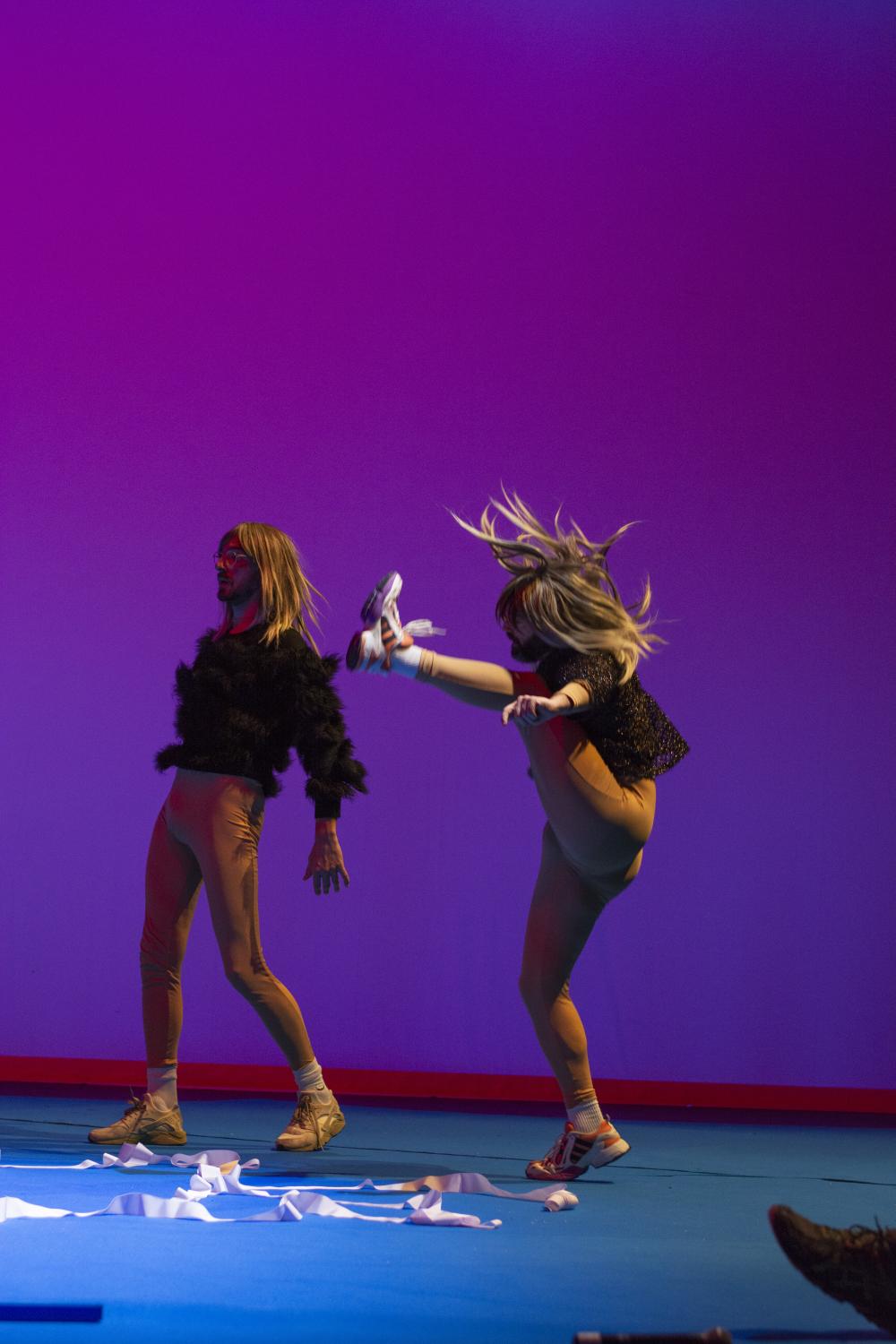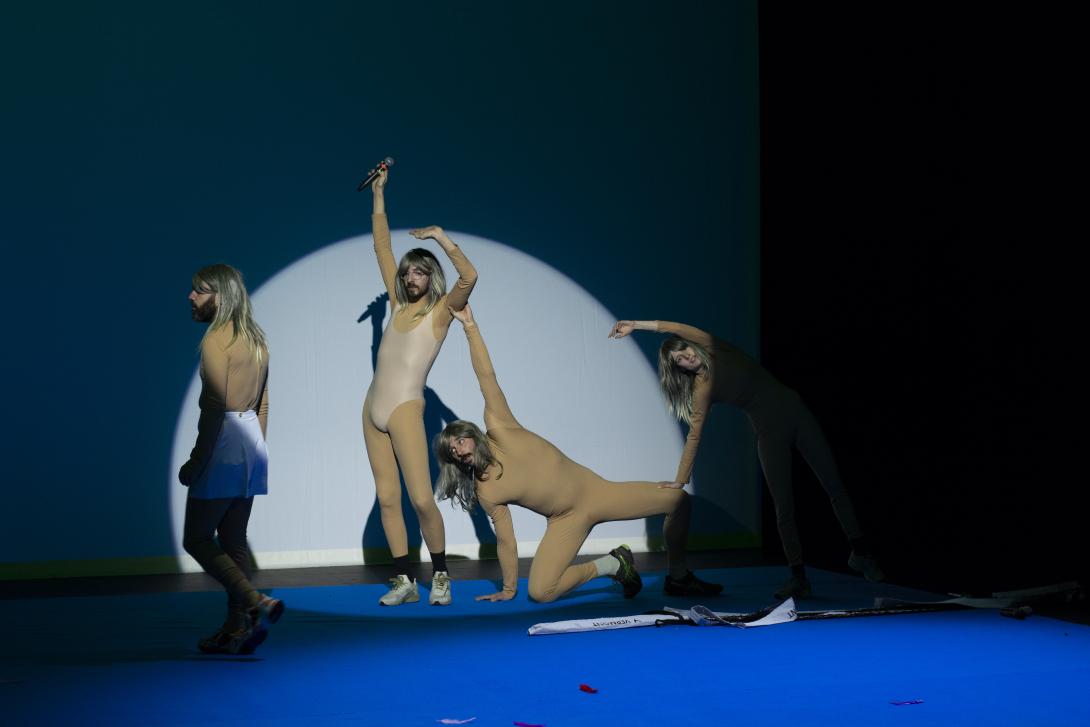Magical and Elastic
Lees hier het digitale programmablad van Magical and Elastic
On Magical and Elastic
text by Andrea Rodrigo, translated by DeepL
Magical and Elastic is a piece conceived by Cuqui Jerez and created in collaboration with six artists from different disciplines: Óscar Bueno (performer and musician), Cécile Brousse (dancer, performer and choreographer), Javi Cruz (visual artist and performer), Louana Gentner (visual artist and performer), Anto Rodríguez (singer and performer) and Gilles Gentner (light designer). This is the prequel to Las Ultracosas, a project that transits the choreographic, the physical, the objectual, the scenographic, the pictorial, the plastic and the theoretical, realised in 2019 by the same team.
In Las Ultracosas, the practical research of Cuqui Jerez and the performers focused on exploring the limits of language from an aesthetic experience of contemplation. They focused on the search for strategies and logics to produce a suspension of meaning, that is, to find the precise point at which the linguistic sign cannot close, but at the same time is not completely open.
We could say that Magical and Elastic is the previous world, or a sort of premonition of a world to come, here primordial forces are at work that draw and point to the language and practice that we saw then in Las Ultracosas. There is a suggestive image that evokes what is happening:
Let's take any point in Las Ultracosas, let's put ourselves in a moment in which Cécile crouches on the edge of starting a lipsync. Let's take any point on her knee, in the inner space of that joint, an open space, in the dark. Now, there, the whole of Mágica y Elástica is happening.
In Cuqui Jerez's production there has always been an interest in the objectual. At first it was formalised by understanding objects as signs in relation to language, paying attention to their semantic charge and sustaining it, denying it or distorting it. From the research process of The Dream Project (2013/2016), a fascination with the materiality of things began to emerge and he began to pay special attention to how matter behaves by observing its qualities: its weight, its texture or the way it falls and crawls when activated by a body. From pieces such as Crocodiles and Alligators (2012), Unos Pasodobles (2013), El lago (2015) and El Fenómeno de las Fuerzas Ficticias (2016), among others, his work took on a more contemplative character, aimed at the search for a non-conceptualised perception, exploring open dramaturgies and increasingly considering the plastic dimension of experience.
In Magical and Elastic the research investigates the narrative capacity of music and puts the body at the centre. The richness of relationships and forms that had previously been explored through objects is transferred to the body, which becomes a kind of container of intensities, tensions and textures that summon emotions very attached to its materiality. The performers allow themselves to be traversed by a series of bodily states that they have been detecting and working on. They are forces that emerge and mechanisms that condition the relationships we see on stage, provoking a proliferation of the senses, both perceptive and conceptual.
The piece proposes a time that takes the form of a landscape. Although there are lines and dramaturgical elements, there is no narrative that guides the experience. There is a palpable work of composition, layers appear, a number of plans that resonate, that unfold in time and that through their deconstruction produce a dislocated perception of meaning and the logics of the relationship of the bodies. The fragmentation of the composition means that, on occasions, the causes of events are separated from their effects. It is a game of premonitions: what has been announced half an hour before and was interrupted becomes a memory that explodes.
It could be said that a key feature of Cuqui Jerez's production is that it takes preconceptions as matter and through their dislocation offers a terrain that is constantly resemanticised. Knotting the experimental with popular or more familiar references offers the generous possibility of holding on to something when it comes to upending conventions. This happens here with the mixture of aesthetics, winks and styles, the genre of the musical, the evocation of a concert or the thorn in our side that sticks in our memory of that soundtrack. And it is precisely in this sense that Magical and Elasticcould be read as a dislocated temporality within the cliché of a musical or a concert.

